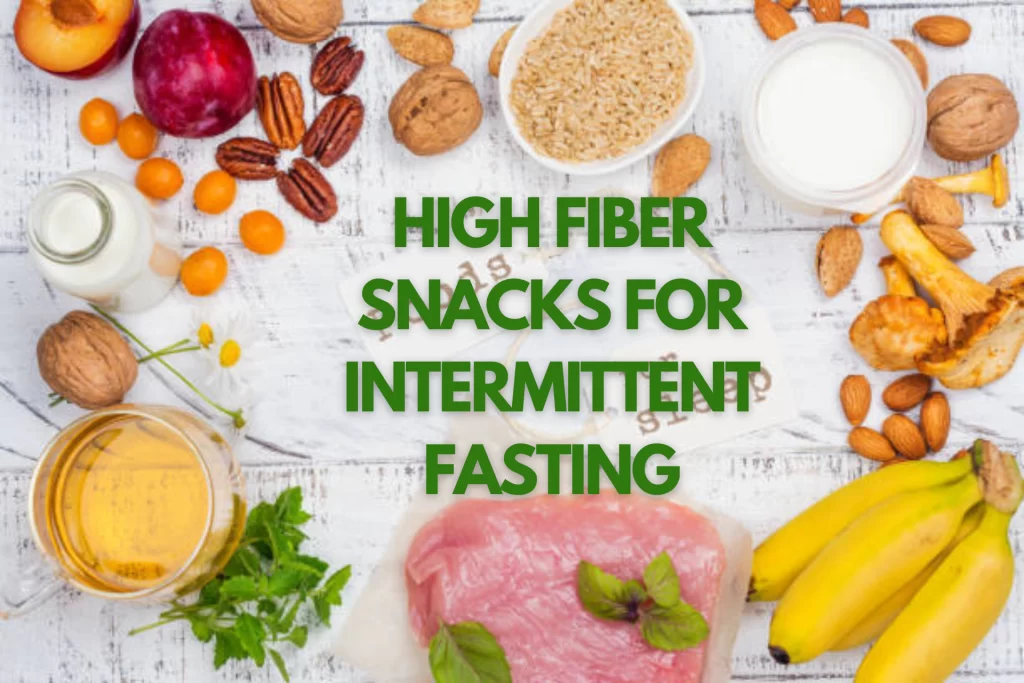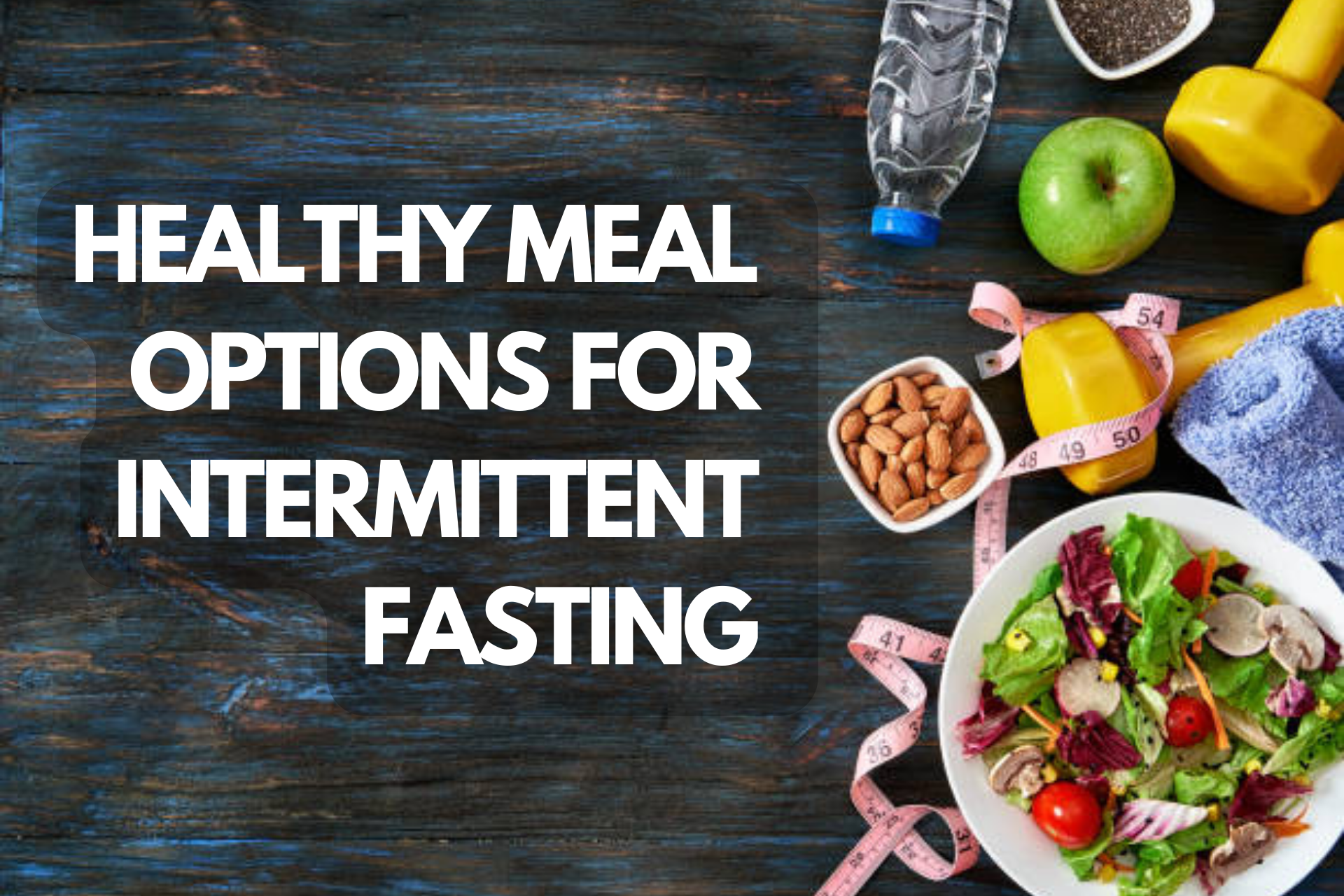Healthy meal options for intermittent fasting
Intermittent fasting is an eating approach that has gained popularity for its potential health benefits. In this article, we cover what is intermittent fasting, its benefit and healthy meal options for intermittent fasting along with healthy high-fiber snacks:
Table of Contents
Healthy meal options for intermittent fasting
What is Intermittent Fasting
Intermittent fasting involves alternating between periods of eating and fasting. There are various approaches to intermittent fasting, including time-restricted eating plans where you eat only during specific windows each day or more intense plans like the 5:2 approach where you restrict calories on certain days.
Benefits of Intermittent Fasting for Weight Loss
Intermittent fasting has been associated with weight loss, improved metabolism, lower blood sugar levels, reduced inflammation, and potential benefits for heart health and overall well-being.
Here are some key benefits of intermittent fasting along with weight loss: improved metabolism, keep better heart health, gets your good physical performance, control type 2 diabetes and obesity, best for tissue health and brain health, cancer risk reduction, cellular repair and longevity
Foods to Eat
While there are no strict rules on what to eat during intermittent fasting, it is important to focus on nutrient-dense foods like fruits, vegetables, whole grains, nuts, seeds, lean proteins, and healthy fats. Maintaining a well-balanced diet is key to reaping the benefits of intermittent fasting.
Healthy Snack Options
Some healthy snack options for intermittent fasting include nuts, dark chocolate, Greek yogurt with berries, apple slices with nut butter, and vegetable sticks with hummus. These snacks provide fiber, nutrients, and can help keep you satiated during your eating window.
Drinks
Calorie-free beverages like water, unsweetened tea, black coffee, lemon water, bone broth (on longer fasts), and unsweetened almond milk can be consumed during intermittent fasting to stay hydrated and control appetite.
It’s important to consult with a healthcare provider before starting any new diet plan, especially if you have underlying health conditions or concerns. Following a balanced diet rich in whole foods and staying hydrated are essential components of a successful intermittent fasting regimen.
Some Healthy Meal Options for Intermittent Fasting
Intermittent fasting offers flexibility in food choices, focusing on nutrient-dense whole foods that can be incorporated into your meal plan during your eating windows. Here are some healthy meal options for intermittent fasting:
1. Proteins: Lean proteins like chicken, beef, pork, turkey, seafood, and eggs are excellent choices for breaking a fast or incorporating into meals during your eating window.
2. Healthy Fats: Avocados, nuts, seeds, nut butters, olive oil, and coconut oil are all great options for adding healthy fats to your diet.
3. Vegetables: Include a variety of vegetables, such as broccoli, Brussels sprouts, cauliflower, cucumbers, leafy greens, and tomatoes, in your meals.
4. Fruits: Apples, bananas, berries, oranges, peaches, pears, and tomatoes are all healthy choices for intermittent fasting.
5. Whole Grains: Quinoa, rice, oats, and other whole grains can be included in your meals during your eating window.
6. Dairy and Lean Proteins: Low-fat yogurt, eggs, fish, legumes, and poultry are all nutritious options for intermittent fasting.
7. Fermented Foods: Incorporating fermented foods like kefir, sauerkraut, and kimchi can support gut health during intermittent fasting.
Remember to stay hydrated by drinking calorie-free beverages like water, unsweetened tea, and coffee during both fasting and eating periods. It’s also essential to avoid high-sugar foods and ultra-processed items, focusing instead on whole, nutrient-dense foods.
Best Supplement To Lose Belly Fat: Must Read
Healthy Meal Options for Intermittent Fasting – Some High-Fiber Snacks

Here are some high-fiber snack options for intermittent fasting:
1. Nuts: Nuts are a great source of fiber and healthy fats. They can be eaten as a snack or added to other foods for added fiber and nutrition.
2. Dark Chocolate: Dark chocolate with a high percentage of cocoa contains fiber and can be a satisfying snack during your eating window.
3. Greek Yogurt with Berries: Greek yogurt is high in protein and can be paired with low-sugar berries for a fiber-rich snack.
4. Apple Slices with Nut Butter: Apples and nut butter provide fiber, vitamins, minerals, and unsaturated fatty acids.
5. Boiled Eggs: Eggs are a nutritious snack that provides valuable proteins.
6. Vegetable Sticks: Vegetable sticks, such as carrots, celery, or bell peppers, can be dipped in hummus or guacamole for a fiber-rich snack.
7. Edamame: Edamame is a high-fiber snack that is rich in plant-based protein and can help keep you full for a long time.
8. Roasted Chickpeas: Roasted chickpeas are a healthy protein bomb that can be easily prepared and enjoyed during your eating window.
9. Whole Grains & Fruit: Pairing whole grains with high-fiber fruits like berries, apples, pomegranates, pears, or bananas can create a nutritious and satisfying snack.
10. Energy Balls: Energy balls made with oats, nuts, seeds, dried fruit, and chia seeds are a portable and delicious snack option.
11. Veggie-Based Dips: Dips like hummus or guacamole can be paired with raw vegetables for a fiber-rich snack.
12. Spiced Nuts: Adding herbs, spices, and aromatics to nuts can enhance their flavor and provide additional nutrients.
13. Popcorn: Popcorn is a whole grain snack that is high in fiber and can be seasoned with herbs and spices for added flavor.
14. Smoothies: Smoothies made with milk, fruit, leafy greens, and seeds can be a high-fiber snack option.
15. Fresh Fruit: Eating fresh fruit like apples, bananas, or berries can provide fiber and other essential nutrients.
Remember to focus on whole, nutrient-dense foods like lean proteins, vegetables, fruits, nuts, seeds, and whole grains to stay satiated and provide essential nutrients during your eating window.
Intermittent Fasting Chart by Weight and Height
The intermittent fasting chart by weight and height is a tool that can help you determine the best fasting schedule for your body type. It takes into account your weight and height to determine the optimal fasting window and calorie intake.
For example, if you are a woman who is 5’5″ and weighs 150 pounds, your optimal fasting window might be 16 hours, with an eating window of 8 hours. This means that you would fast for 16 hours and eat during an 8-hour window.
On the other hand, if you are a man who is 6’2″ and weighs 200 pounds, your optimal fasting window might be 18 hours, with an eating window of 6 hours. This means that you would fast for 18 hours and eat during a 6-hour window.




